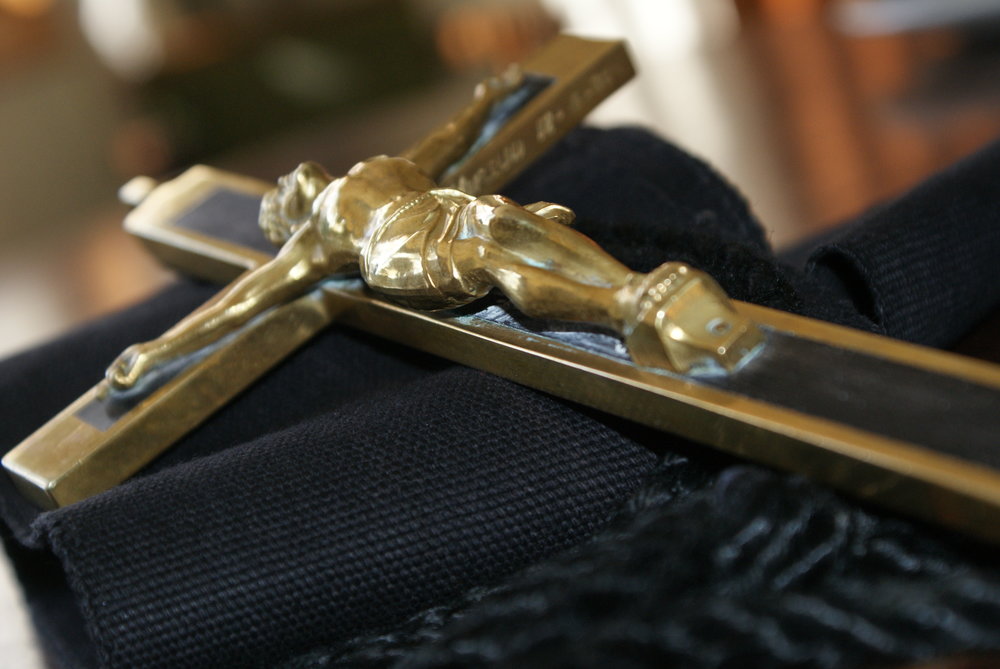
Oblate Fathers
One of the major problems the Most Rev. Dr. Orazio Bettachchini, the Pro-Vicar Apostolic of Jaffna faced was the lack of the missionaries in his diocese especially in view of developing the level of education of the people of his diocese. As a solution to this, he went to Europe in 1843 and met Bishop Eugene de Mazenod, the founder of the Oblate Fathers and requested him to send missionaries to Sri Lanka. Following his request, Rev. Fr. Stephen Semeria and three other missionaries came to Sri Lanka in 1847. There were few other missionaries who followed them and came to this country and by 1850, there had been 13 of them altogether.
Following the footsteps of their master, Blessed Eugene de Mazenod, they were going from one place to the other meeting the marginalized, the poor, the uneducated and the sinful and served them with utmost love and care. Both Jaffna and Colombo were privileged to receive their services in a very special way.
The turning point in the development of Catholic education in this country takes place with the arrival of Rev. Fr. Christopher Bonjean in this country. His arrival in this country takes place in the year 1856, having heard about the Catholics in this country while he was serving in India. He then joined the congregation of the Oblates of Mary Immaculate.
Following the Colebrook-Cameron recommendations, a new commission was formed in order to develop education in this country. In 1834, this commission consisting of Protestant priests and government officials was formed in order to look after education. This commission was in favour of Protestants and aimed at converting people to Protestantism.
In 1841, an amendment was introduced to the commission on Education whereby it became the Central Education Commission. Out of nine members, only 3 were priests, out of which, one was a Catholic priest. This commission was formed in order to find solutions in terms of the uniformity of the resources for each religion. The outcome of the commission is as follows.
- A Catholic representation was in this commission. So the catholic schools were able receive aid.
- The facility was not enjoyed by the Muslims, Hindus and Buddhists. Their representatives were not included in the commission.
- The commission proposed a Christian education system and in these Christian schools, all religions were to be taught.
- As Colebrook recommended government schools with English as the medium of instruction, village schools were doomed to be closed.
It is within this context that the Oblate Fathers come to Sri Lanka and particularly the arrival of Rev. Fr. Christopher Bonjean who was extremely interested in education started seeing the loopholes in the prevailing system.
In 1865 Morgan Commission was formed to research and report on education in the country. They consulted Rev. Fr. Christopher Bonjean on this. He voiced his opinion against the prevailing system where Muslims, Hindus and Buddhists were not regarded in the education system. The Sub Commission recommended that the earlier Central Education Commission would be abolished and a new body would be formed. This was named as the Department of Public Instruction. Under the influence of Fr. Bonjean, the following decisions were arrived at.
- A new education system was introduced
- Each religion could start their own schools
- Government agreed to grant aid to the schools that function well.
- Parents had the right to choose the school for their children
- All religions have their religious rights in the schools
- Primary education must be in vernacular
- Children must be taught the religion of their parents
Accordingly, Rev. Fr. Christopher Bonjean became the father of grant-in-aid schools. Between 1869 and 1896 education developed rapidly. It was an English education. English education did not give knowledge about native languages, history and environment. Books were published in English. Teaching techniques and examination methodology was in line with that of Britain. By this, Sinhala was cornered in the country. We remember with love and gratitude, the services of Fr. Bonjean for the education of this country.
With the recommendations of this subcommittee, Central School Commission became defunct and new arm was established which was named as Department of Public Instruction. This, later on, became the Department of Education. The services of the first Archbishops of Colombo who happen to be Oblates cannot be forgotten. They established in this country some of the major schools which serve with utmost commitment to this day. Most Rev. Dr. Christopher Bonjean OMI, Most Rev. Dr. Andrew Melizan OMI, Most Rev. Dr. Anthony Coudert OMI, Most Rev. Dr. Peter Marque OMI, Most Rev. Dr. John Mary Masson OMI, Most Rev. Dr. Thomas Cardinal Cooray OMI are well among them. Almost all the catholic private schools and other major schools, particularly in Colombo and Jaffna are a result of their vision for this country.
In addition to this, Most Rev. Dr. Edmund Peiris OMI, Rev. Fr. Peter Pillai OMI and many other unsung heroes who belonged to the Oblate congregation have contributed immensely for the well-being of this country. Catholic education is what it is today in this country, simply because of the deep commitment of the Oblate Fathers in Sri Lanka.
